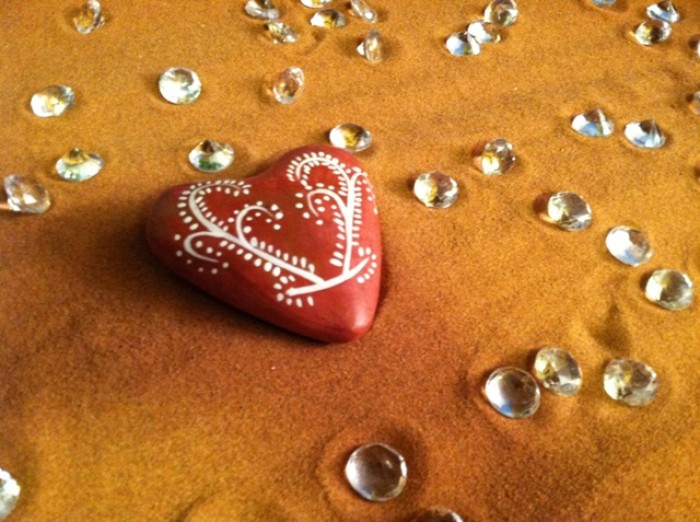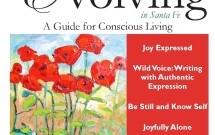
Laura L. Lansrud-López, M.A., ATR-BC, LPCC, LPAT, CTS
http://www.arttherapysantafe.com/
Do art therapy and counseling belong together? This question has come to my attention recently in conversations with colleagues, students, and supervisees, and in some forums is hotly discussed. I myself hold an Art Therapy / Counseling degree and hold dual licenses as a clinical counselor and professional art therapist in NM.
Does this mean I have a split personality? Oh, and I use Sandplay therapy, perhaps making the picture more confusing.
I’ve been pondering the question of how, and to what degree, the two fields “should” be separated. Is counseling trying to “gobble up” art therapy? Does art therapy, as a field, need to scratch and claw its way to “independence” from counseling? I work with clients every day and some weekends in my private practice. Sometimes we make art, sometimes my clients play in the sand, sometimes I just listen, sometimes we work on mindfulness, or practice skills for emotional regulation, distress tolerance, and interpersonal communication.
 When I reflect on what it is I do in therapy – is it Art Therapy? Is it Counseling? Is it Sandplay? – I’m left with the clarity that what I do, what I try to do in every session is attune to the person with me, listen deeply for what is needed in the moment, provide an environment for his or her Authentic Self to emerge, and then witness, reflect, and delight in that emergence. The work isn’t easy, there are many things in myself, the relationship, and the art work or image created to track and bring to consciousness. My education in theory, ethics, and experience in the therapeutic use of art, and honoring the image forms structure around us. But the foundation of my work is the act of bringing my highest consciousness, my own Authentic Self, into the room with full attention. My listening occurs on multiple levels: the physical, emotional, mental, and spiritual. In attunement, there is safety, and in safety the psyche can heal itself. (My preferred metaphors come from interpersonal neurobiology and trauma informed care, but that’s for another post).
When I reflect on what it is I do in therapy – is it Art Therapy? Is it Counseling? Is it Sandplay? – I’m left with the clarity that what I do, what I try to do in every session is attune to the person with me, listen deeply for what is needed in the moment, provide an environment for his or her Authentic Self to emerge, and then witness, reflect, and delight in that emergence. The work isn’t easy, there are many things in myself, the relationship, and the art work or image created to track and bring to consciousness. My education in theory, ethics, and experience in the therapeutic use of art, and honoring the image forms structure around us. But the foundation of my work is the act of bringing my highest consciousness, my own Authentic Self, into the room with full attention. My listening occurs on multiple levels: the physical, emotional, mental, and spiritual. In attunement, there is safety, and in safety the psyche can heal itself. (My preferred metaphors come from interpersonal neurobiology and trauma informed care, but that’s for another post).
Whether we make art, play, talk, or work on skills follows naturally from listening deeply for what is NEEDED by my client in the moment; it is not imposed ON the moment by my self-identity as an Art Therapist or Counselor. To me, this is Consciousness-Centered Art Therapy and Counseling. As I’ve pondered the question of the differences between the two fields the past week, I’m reminded of Rumi’s quote:
“Out beyond ideas of wrongdoing and right-doing,
there is a field. I’ll meet you there.
When the soul lies down in that grass,
the world is too full to talk about.
Ideas, language, even the phrase each other
doesn’t make any sense.”
I would love to hear how others understand “Consciousness-centered” art therapy or counseling.
 Southwestern College Santa Fe, NM
Southwestern College Santa Fe, NM





